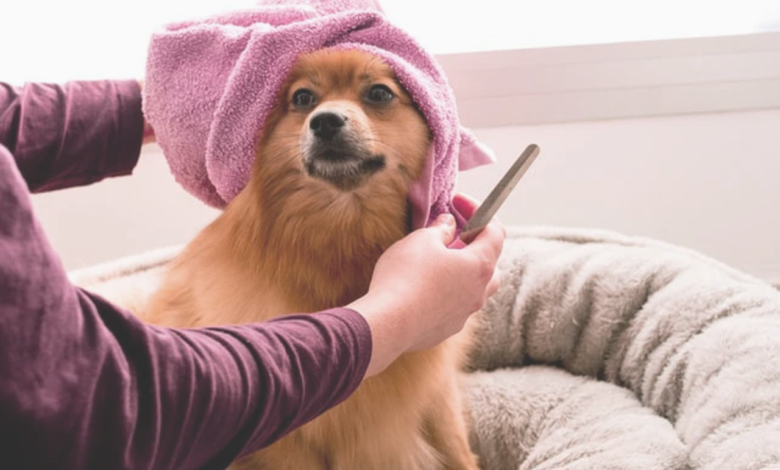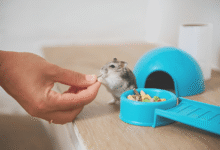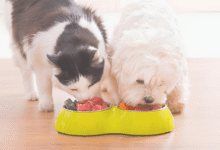
DIY Grooming Tips for Healthy Pets in Wisconsin
DIY grooming tips for healthy pets in Wisconsin Learn seasonal care, brushing, bathing & nail trimming to keep your pet happy,
Keeping your pet well-groomed is one of the most important things you can do to ensure their health and happiness, especially in Wisconsin’s ever-changing climate. From frigid winters to humid summers, the seasonal shifts can take a toll on your pet’s skin, coat, and overall comfort. By following these DIY grooming tips for healthy pets in Wisconsin, you can help prevent common issues like dry skin, matting, and parasites while strengthening the bond between you and your furry friend. Regular at-home DIY Grooming not only saves money but also allows you to monitor your pet’s health closely, catching potential problems early.
Whether you have a long-haired dog that needs frequent brushing or a short-haired cat that sheds seasonally, establishing a consistent DIY Grooming routine is key. Wisconsin’s weather demands special attention winter calls for protective paw care, while summer requires vigilance against fleas and ticks. With the right tools and techniques, you can keep your pet looking and feeling their best all year round. Let’s explore the essential steps to maintaining a healthy, well-groomed pet in the Badger State.
DIY Grooming Tips for Healthy Pets in Wisconsin
The Importance of Regular Grooming for Pets in Wisconsin
Wisconsin’s weather can be tough on pets. The cold winters bring dry air, which can cause itchy, flaky skin, while the warm, humid summers create a breeding ground for fleas, ticks, and hot spots. Regular DIY Grooming helps manage these challenges by removing dirt, loose fur, and parasites while promoting healthy skin and coat.
Essential DIY Grooming Tools for Pet Owners
Every pet parent in Wisconsin needs the right tools to keep their furry companions clean, comfortable, and healthy. Whether you’re battling winter dryness or summer shedding, having high-quality DIY Grooming supplies makes the process easier and more effective. Here’s a detailed look at the must-have tools for your at-home pet grooming kit.
Brushes and Combs
The foundation of any DIY Grooming routine starts with the right brush for your pet’s coat type. Slicker brushes work wonders for removing loose fur and preventing mats in medium- to long-haired breeds like Golden Retrievers or Persians. For thick double coats (think Huskies or German Shepherds), an undercoat rake or deshedding tool helps manage seasonal shedding. Short-haired pets, such as Beagles or Domestic Shorthair cats, benefit from rubber curry brushes that massage the skin while collecting dead hair. Always finish with a stainless-steel comb to smooth the coat and check for any remaining tangles.
Pet-Safe Shampoo and Conditioner
Never use human shampoo on pets their skin has a different pH balance. Opt for a moisturizing, oatmeal-based formula for sensitive skin (great for Wisconsin’s dry winters) or a hypoallergenic option for pets prone to allergies. For dogs that love outdoor adventures, a clarifying shampoo can help remove dirt and odors. Always follow with a conditioner to keep the coat soft and manageable, especially for long-haired breeds.
Nail Clippers or Grinders
Overgrown nails can cause pain and even affect your pet’s posture. Guillotine-style clippers are ideal for small to medium dogs, while scissor-type clippers work better for larger breeds. If your pet is nervous about clipping, a nail grinder files nails down gradually with less stress. Remember to have styptic powder on hand in case you accidentally trim too close to the quick.
Ear Cleaning Supplies
Flop-eared breeds like Cocker Spaniels and Basset Hound are prone to ear infections, especially in Wisconsin’s humid summers. Keep a vet-approved ear cleaning solution and cotton balls (never Q-tips) in your kit to gently wipe away dirt and wax. Look for solutions with soothing ingredients like aloe vera to prevent irritation.
Toothbrush and Pet Toothpaste
Dental health is often overlooked but critical for preventing costly vet visits. Use a soft-bristled toothbrush or finger brush designed for pets, along with enzymatic toothpaste (never human toothpaste, which contains harmful xylitol). For pets resistant to brushing, dental wipes or water additives can supplement their oral care.
Paw Care Essentials
Wisconsin’s winters mean salt and ice melt on sidewalks, while summers bring hot pavement. Protect your pet’s paws with a nourishing balm to prevent cracking and a pair of pet-safe booties for extreme weather. Keep a damp towel handy to wipe paws after walks, removing harmful chemicals or debris.
Grooming Wipes and Detangling Spray
Between baths, DIY Grooming wipes are perfect for quick cleanups, especially for paws or muddy fur. For pets with long hair, a detangling spray makes brushing easier and prevents breakage. Look for natural ingredients like coconut oil to moisturize the coat.
First-Aid Basics
Accidents happen, so include blunt-tipped scissors (for cutting out mats), tweezers (for ticks or splinters), and antiseptic spray in your kit. A grooming table or non-slip mat can also make the process safer and more comfortable for both of you.
Step-by-Step DIY Grooming Routine for Wisconsin Pets
The Foundation of Good Grooming
Regular brushing is crucial, especially for double-coated breeds like Huskies or German Shepherds. In winter, their undercoat thickens, leading to more shedding when temperatures rise. Brush at least 2-3 times a week to prevent tangles and reduce fur around the house.
Keeping Your Pet Clean Without Overdoing It
Overbathing can strip natural oils, leading to dry skin a common issue in Wisconsin’s cold months. Dogs typically need baths every 4-6 weeks, while cats usually groom themselves but may need occasional help.
Preventing Overgrowth and Discomfort
Long nails can cause pain and affect your pet’s posture. Trim nails every 3-4 weeks, using guillotine clippers or a grinder. Be cautious of the quick (the pink part inside the nail), as cutting it can cause bleeding. If unsure, trim small amounts at a time. For pets resistant to nail trims, try positive reinforcement with treats.
Preventing Infections
Wisconsin’s humidity can lead to ear infections, especially in breeds like Cocker Spaniels or Basset Hounds. Check ears weekly for redness, odor, or discharge. Use a vet-approved ear cleaner and cotton balls to wipe the outer ear never insert anything deep into the ear canal.
Promoting Fresh Breath and Healthy Gums
Oral health is often overlooked but vital for preventing disease. Brush your pet’s teeth 2-3 times a week using a pet toothbrush and enzymatic toothpaste. Dental chews and water additives can also help reduce plaque.
Protecting Against Wisconsin’s Elements
Winter salt and summer hot pavement can damage paw pads. Apply pet-safe balm in winter and rinse paws after walks. Regularly check for cracks or foreign objects between toes.
Seasonal Grooming Adjustments for Wisconsin Pets
Winter Grooming Tips
Limit baths to avoid dry skin. Use a humidifier indoors to combat dry air. Keep fur longer for insulation but ensure it stays mat-free. Wipe paws after walks to remove ice melt chemicals.
Summer Grooming Tips
Trim longer coats to prevent overheating (but avoid shaving double-coated breeds). Check for fleas and ticks after outdoor activities. Provide plenty of water to keep pets hydrated.
When to Seek Professional Grooming Help
While DIY grooming is cost-effective, some situations require a professional Severe matting that can’t be safely removed. Aggressive or extremely anxious pets. Specialized breed cuts (e.g., Poodle trims). Skin conditions needing medicated baths.
Read More: Online Pet Training Resources for Alaska Owners What Works in the Cold
Conclusion
Maintaining a regular DIY Grooming routine is one of the best ways to ensure your pet stays healthy and comfortable in Wisconsin’s ever-changing climate. By following these DIY grooming tips for healthy pets in Wisconsin, you can prevent common issues like dry skin, matting, and infections while strengthening your bond with your furry companion.
Remember, DIY Grooming isn’t just about appearance it’s about overall wellness. With patience, the right tools, and a consistent schedule, you can keep your pet looking and feeling their best year-round. If ever in doubt, consult your veterinarian or a professional groomer for guidance tailored to your pet’s specific needs.
FAQs
How often should I brush my pet in Wisconsin?
Brush short-haired pets 1-2 times a week and long-haired breeds 3-4 times a week to prevent mats and reduce shedding.
Can I use human shampoo on my pet?
No, human shampoo can disrupt your pet’s skin pH. Always use a pet-formulated shampoo.
How do I know if my pet’s nails are too long?
If you hear clicking on hard floors or see nails curling, it’s time for a trim.
What’s the best way to remove ticks at home?
Use fine-tipped tweezers to grasp the tick close to the skin and pull straight out. Disinfect the area afterward.
Should I bathe my cat if they DIY Grooming themselves?
Most cats don’t need baths, but long-haired or senior cats may require occasional help with DIY Grooming.







